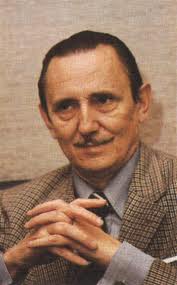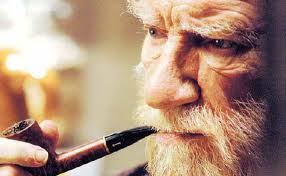Spanish Contemporary Theatre
The history of Spain suffers a dramatic spin in the middle of the 1930s, as the tension between opposing political forces ultimately lead to a long and traumatic civil war. The conflict had far-reaching consequences in all aspects of the social, political, and, indeed, cultural reality of the country - and contemporary Spanish theatre would by no means be the exception.

Caught in the midst of a delicate process of consolidation of power and social cleansing, which, at the same time, coincided with the alarming unravelling of the bloodiest armed conflict in the history of the West, Spanish theatre in the 40s and through most of the 50s was largely defined by an escapist attitude, punctuated by the somewhat absurdist humour of Jardiel Poncela's and Miguel Mihura's work.
Jardiel Poncela's work, both dramatic and narrative, was not especially well received at the time, even if today he is heralded as a visionary, and one of the most influential writers of the first half of the century. His most popular play was Eloisa está debajo de un almendro, while his comic/absurdist novels Amor se escribe sin hache and Espérame en Siberia, vida mía have been relaunched recently.
Parallel to the development was the emergence of a social theatre, which, again, fell on the safe side of realism and looked at situations with detachments by using symbolist and/or historical resources. Antonio Buero Vallejo was a successful exponent of this tendency, with his La tejedora de sueños featuring as a good example.
Spanish theatre, and Spanish literature in general, suddenly gained a renewed sense of freshness in the 1960s, as young artists were perhaps less obsessed with the atrocities of war, and more concerned with the specific conditions, generally miserable, of their society. Within this environment, Buero Vallejo's drama developed into a more critical social work, with his El tragaluz standing out among the pieces of the time.
Simultaneously, Alfonso Sastre was developing his radically critical social theatre. Already reputed for his success from 1953, Escuadra hacia la muerte, Sastre continued to push in the highly controversial direction of his social critique, until he was incarcerated in he 1970s for his political activities.
Spanish Theatre in the Democratic Age
Following the death of Francisco Franco and with the advent of the Democratic Age in Spain, the artistic and cultural scenes underwent a dramatic change in the country. It was the time of a peaceful - though anything but subdued - revolution, which encompassed practically every aspect of daily life. There was a statement to be made in everything, and even walking down the road to buy a loaf of bread could become subversive, if your leather mini-skirt was short enough.

This period of new-found self-expresion came to be known as La movida. It was characterised, above all, by an insatiable appetite for experimentation among the members of its generation. In contemporary Spanish theatre this tendency became palpable with a flurry of experimental production companies that injected much vigour into the dramatic scene with developments that married the avant-garde of the early XX century with the conceptual ideas of the new millennium.
A legacy of this period was the establishment of what came to be known as independent Spanish theatre, and with it the proliferation of open-air production, theatre on the streets and spontaneous performances, still today a striking characteristic of the Spanish cultural scene, which can be easily experienced even if you are only staying a few weeks in the country.

There were precious few but significant exceptions to this phenomenon in the 1980s and beyond, but one name that should be mentioned is Fernando Fernan-Gómez, whose Las bicicletas son para el verano was a major success. From the 1990s onwards contemporary Spanish theatre has also developed an important liking for the musical, large, and often international, productions that dazzle, à la Broadway.
But, in end effect, there is room for the three trends, and if you visit the leading centres of contemporary Spanish theatre, be it Madrid or Barcelona, you are sure to find myriad opportunities to attend a show to your taste, be your liking more orientated towards renowned authors, substantial productions or more experimental stagings.
